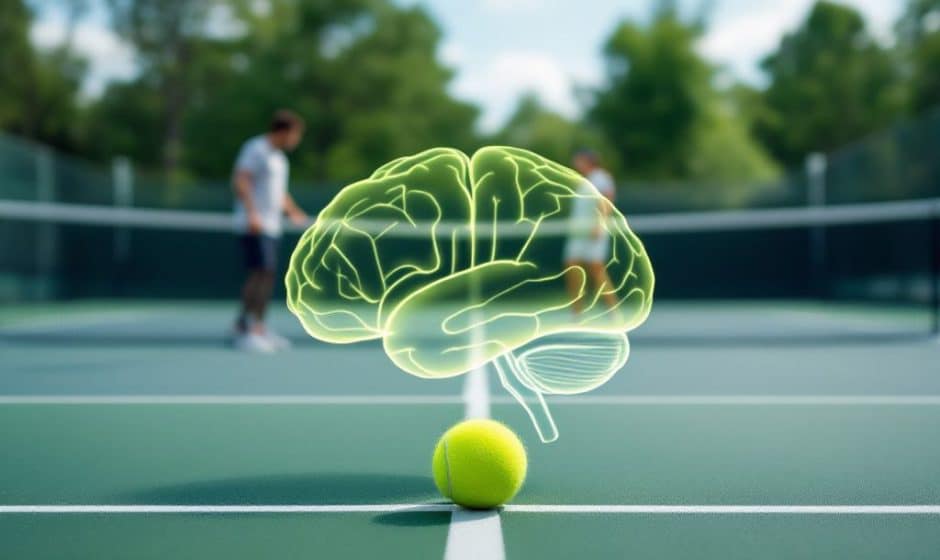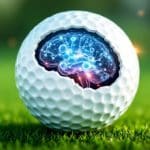Ever found yourself on the tennis court, eager to improve your game but unsure where to start? Maybe you’ve considered hiring a coach but wondered, “What makes a great tennis coach?” Today, let’s dive into the fascinating and sometimes overlooked world of tennis coaching balance—it’s more complex than just swinging a racket and shouting, “Great volley!”
For any tennis player, beginner or pro, finding balance with your tennis coach can be the secret sauce to success or the reason your game stagnates. Balance in coaching is key—not just on technical sides, like mastering your forehand, but also in aspects like mental resilience and, believe it or not, hormone regulation. Yep, hormones. That might sound more like a biology lesson than tennis, but hold tight; it all ties in.
Understanding the Role of a Tennis Coach
First things first, let’s chat about the role of a coach. Think of your tennis coach as more than a skill trainer. They’re like a personal guide, helping you navigate through the ups and downs on the court. From honing your backhand to strategizing your match play, their job is to ensure every part of your game is in harmony.
Assessing Your Strengths and Weaknesses
A good coach starts by assessing your skills: Where do you excel? Are there areas you struggle with—maybe handling those intense, heated matches? Well, that’s where balance comes into play.
Coaches maintain balance by evaluating player strengths and tailoring techniques to “level up” areas requiring improvement. This isn’t a one-size-fits-all approach—think of it as custom tailoring your sports suit, ensuring the fit is just right for you uniquely.
Bringing Hormone Regulation into the Game
Now, you might be wondering: where do hormones fit into a tennis coaching discussion? Here’s the scoop: hormone regulation plays an integral role in player health and performance. Stress, anxiety, and exhaustion can lead to hormone imbalances, affecting your game.
Experienced coaches help players manage stress with strategies that inherently regulate hormones—like mindful breathing during changeovers or incorporating regular rest for recovery, reducing cortisol levels (that’s a stress hormone, by the way). It’s all about creating a well-rounded health plan that keeps you energized and resilient on the court.

Communicating Effectively
Communication can make or break a coaching relationship. Ever tried to explain something you’ve been working on but it just won’t come out right? It’s infuriating! Coaches need to align their coaching language and communication style with what each player understands best. Someone may thrive on detailed technical explanations, while others might prefer simple encouragements—“Keep your head up!” or “Pump those brakes.”
Open Feedback Loop
Maintaining a balance means keeping the communication bridge sturdy and open. Receiving and offering feedback should be a comfortable, two-way street. Got doubts about a certain technique? Bring them up. A well-balanced coach listens, adjusts, and explores new solutions, keeping the player involved and invested.
Encouragement and Accountability
Sometimes, you need a gentle nudge. Other times, it involves some tough love. The coach’s role is to balance motivation and discipline. Understand that the balance lies in pushing an athlete beyond perceived limits while respecting individual boundaries. Over-pushing can lead to burnout, a dreaded spiraling decline in court performance and overall health.
Developing Mental Resilience
Let’s face it: tennis isn’t just the physical grind. Your mental game impacts how you perform. Balance in coaching means helping players cultivate resilience. Picture this: It’s the third set, you’re one point away from victory, and self-doubt slinks in. How do you cope?
Strategies for Mental Toughness
Coaches foster balance by incorporating mental toughness training, teaching ways to maintain focus under pressure. Techniques may include visualization routines or pre-game rituals to foster a heightened focus. Practice mentally gasping that triumph every time before reality speaks it.
Conflict Resolution
Balance also rests in gracefully handling courtroom conflicts. A well-balanced coaching style teaches players to resolve inter- and intra-game disputes, maintaining composure even when decisions feel unjust. Remember, it’s all part of the game—treat challenges as stepping stones, not stumbling blocks.
Creating a Balanced Training Regimen

You know the phrase, “Variety is the spice of life”? A varied routine prevents staleness and keeps hormone levels in check. Monotonous routines with high-intensity focus may help initially but usually lead to physical and mental breakdowns.
Diverse Drills and Conditioning Reflections
A balanced training schedule—mixing endurance drills with agility exercises and skill-specific routines—helps create sustained athletic growth. Add varying court sport health exercises like plyometrics or yoga, implementing the anti-burnout formula.
Rest and Recovery
Our coaches frequently see players that brush off the critical importance of rest. A coach harnesses balance by dictating a reasonable number of sessions spaced with rest days to promote muscle recovery, reduce injuries, and restore optimal hormone levels. Keep your body rested, and you’ll see those performance spikes shoot up.
Nutritional Support
Talk nutrition—your body needs fuel. Coaches guide players in adopting nutrition plans aligning with energy demands of competitive tennis. Hormone regulation gets a nod once more here, aiding in fresh functioning on the health court.
Building Confidence on and off the Court
Confidence doesn’t solely develop from trophy wins; it’s fine-tuned in practice sessions and beyond-court experiences. Players often wear a tough shell on the exterior but crack inside, unsure. That’s human.
Embracing Each Match as a Learning Curve
Every challenging match holds learning curves banks. Realize nothing serves you more bricks of humility and strategy knowledge than a grueling match. No shame in defeats; only invaluable lessons for future victories rooted in balanced coaching.

Celebrating Progress
Don’t just win; own your wins! Coaches balance carefully praised victories, teaching players to internalize achievements without letting accolades cloud their growth journey. Fundamentally, progress defines success.
Common Pitfalls and How to Circumvent Them
Ladies and gents, the courts are riddled with hurdles. Recognition pivots prevention. Inexperienced coaching often leads to detrimental hormones, improper training, or strain injuries—undermin solidarity-driven players.
Overtraining Syndrome
It’s quite natural to feel zealous initially, but overtraining means serious adverse changes in ability. Significant hormone disruption may mean longer healing spans—lower libido, high irritability, or halted progress. If coaches promote regimens without resting phases, rethink priorities.
Neglecting Underlying Behavioral Factors
Stress, impatience, frustration—they bring out different attire, requiring managed behavioral awareness. Balance awareness cape, guiding friendly competitors justly points at adverse origin behaviors often buried.
Imbalance Communication
Lack of direct tension addressing ignite mutual resentments and assumptions. Ensure issues aired, questions resolved timely, and latency—continuous ideal check-ins course correcting accordingly.
Wrap-Up
There you have it—a delicately balanced art form of tennis coaching, tailored to your individual needs around the court sport health bubble. It’s nurturing body mobility and harmonious hormone regulation that creates formidable players. Whether you’re vying for that first championship or seeking a healthy exercise outlet, remember, balance supports every player in finding their rhythmic groove.
Embrace and sustain this coach player equilibrium, fostering lasting friendships flourishing beyond court allies. Keep swinging, challenge yourself, love the game—with steady balance enveloping your sportsman journey. It ain’t perfect, but rest assured, you’re getting just the hang of performing with natural balance.
Frequently Asked Questions
What is the hormonal system and how does it work?
The hormonal system, also known as the endocrine system, is a network of glands and organs that produce hormones. These hormones regulate various body functions, including metabolism, growth, bone and muscle health, heart function, and sexual development. When a hormone is released from a gland, it travels through the blood to reach its target cells[1][4].
How are hormone levels regulated in the body?
Hormone levels are primarily controlled through negative feedback mechanisms. For example, when the levels of certain hormones, such as thyroid hormones (T3 and T4), rise, they inhibit the release of the hormones that stimulated their production, creating a feedback loop that maintains hormonal balance[4].
What are the signs and symptoms of a hormonal imbalance?
A hormonal imbalance can cause a variety of symptoms, including irritability and fatigue, mood swings and depression, skin dryness, water retention and weight gain, osteoporosis and joint pain, decreased libido, insomnia, and memory issues. These imbalances can be caused by natural life stages like puberty, pregnancy, perimenopause, and menopause, or by other factors such as surgery or stress[2][5].
How can hormonal imbalances be treated?
Hormonal imbalances can be treated with hormone replacement therapy (HRT), which includes systemic hormone therapy, low-dose vaginal products, and bioidentical hormone replacement therapy. These treatments help restore stable hormone levels, improving symptoms such as sleep, energy, mood, and skin health. Bioidentical hormone replacement therapy, in particular, uses hormones identical in structure to those produced by the human body and may have fewer side effects than traditional HRT[2][5].
References



